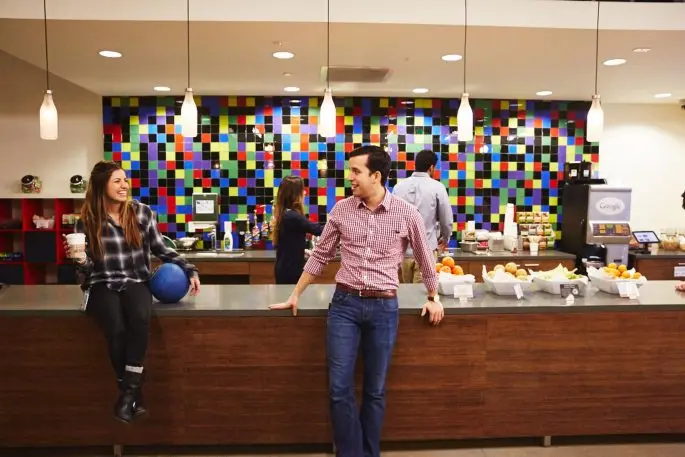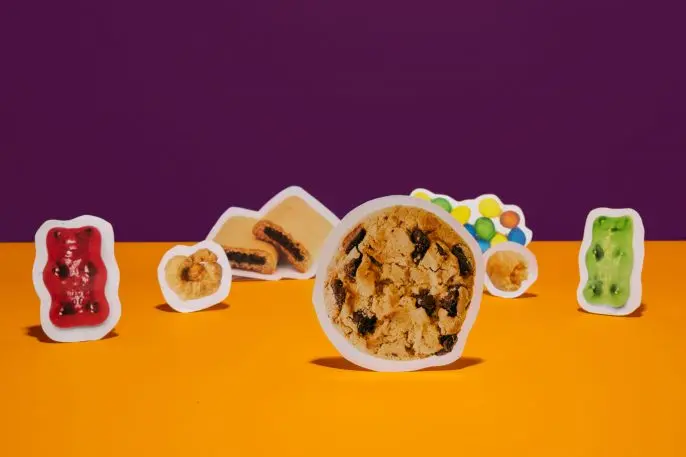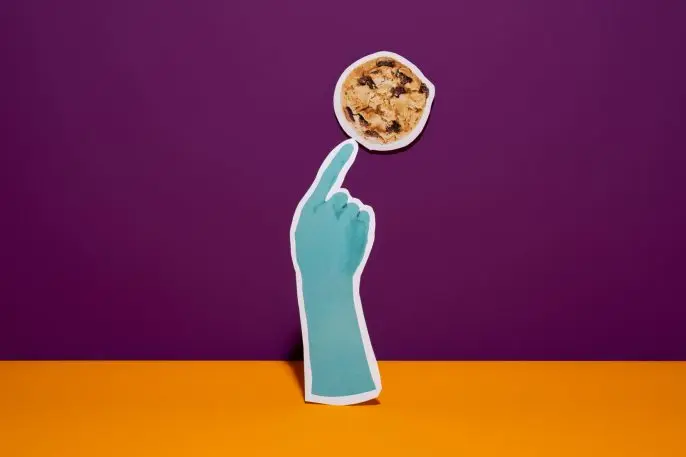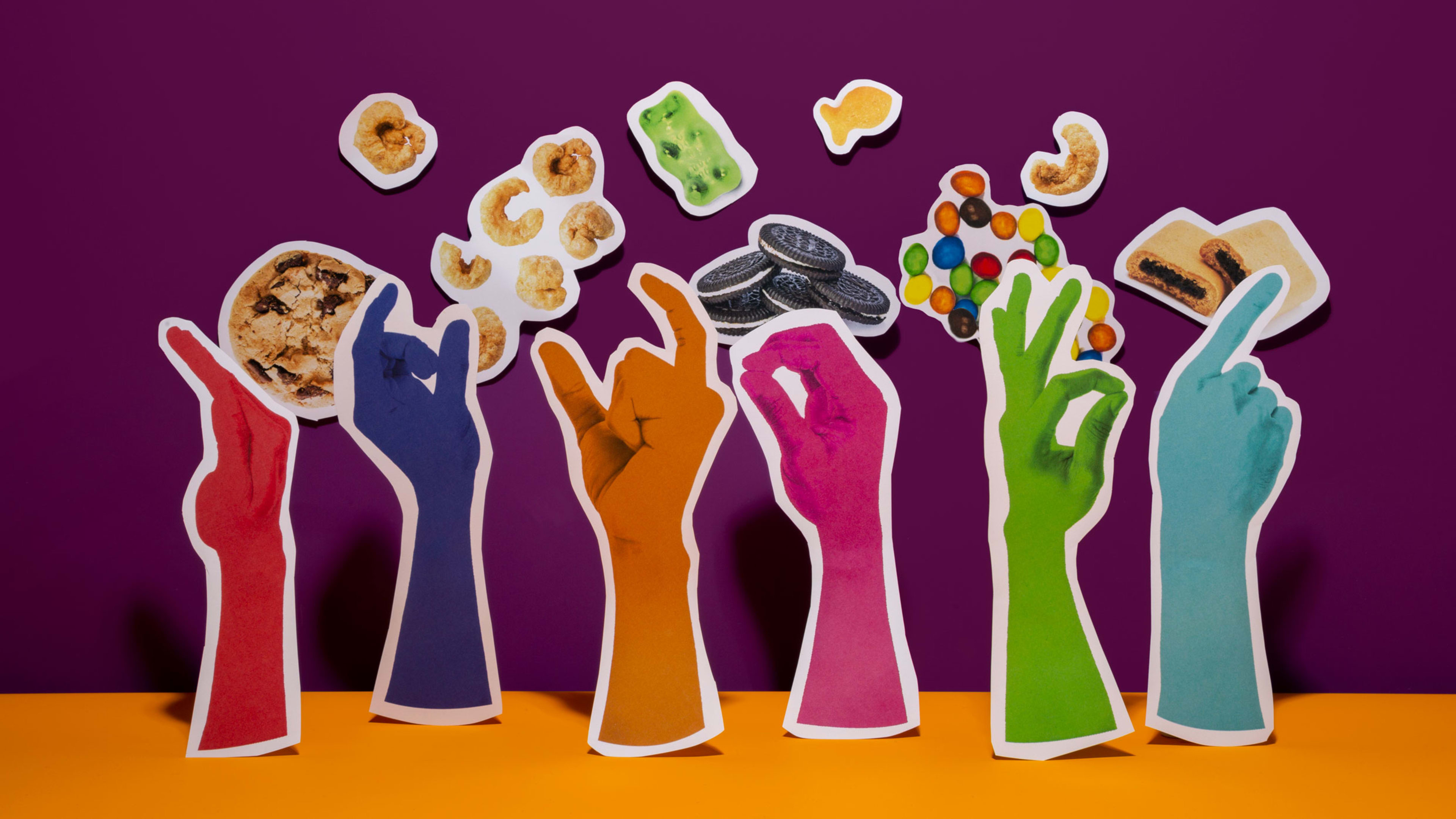On Glassdoor, the site where people can rate and review workplaces anonymously, a Google employee begins a list of “pros” with: “Food, food, food.”
“Food galore,” says another reviewer. “Everyone gains the Google 15,” jokes yet another. Even a less effusive evaluator notes: “Snacks awesome. Retirement plan not so good.”
As urban legend has it, Google cofounder Sergey Brin once instructed office architects that “no one should be more than 200 feet away from food.” And so they rarely are. On any given day, the 1,300 “microkitchens” located within Google’s 70 or so offices around the world, from Pittsburgh to Istanbul, brim with dried seaweed, turkey jerky, kombucha, and other eclectic treats that rotate according to season, popularity with employees, local tastes, and food trends.
Google takes its snacking very seriously. That’s why it has a dedicated team overseeing it and a chef named Matt Colgan at the helm at many of its western campuses, where he (along with menu architects, wellness managers, and nutrition specialists at Google Food) has quietly emerged as one of the most powerful gatekeepers in the packaged-food world.

Colgan doesn’t technically work for Google. He’s employed by ISS Guckenheimer, one of the food-services companies that Google partners with. But Colgan’s job is to oversee the sourcing and preparation of freshly cooked breakfasts, lunches, and dinners at his Google offices every day—as well as the snack inventory in the microkitchens. All of this food is free for Google employees, who enjoy the same choices no matter where they stand on the workforce ladder. At the Google headquarters alone (aka Googleplex, aka Mountain View, aka MTV), for instance, there are 23,000 rumbling stomachs to feed.

For “Guckenheimer@Google,” as the partnership is known, Colgan keenly monitors food trends. He visits trade fairs, such as the annual Fancy Food Show, where vendors tempt buyers with more than 80,000 specialty food and beverage products in San Francisco. In June, he attended the Menus of Change Conference in New York, which featured panel discussions on flexitarian diets, sustainable yet delicious carbohydrates, and the effect of climate change on food.
He also gets lobbied by food distributors both large and small. “Different companies are always coming around, especially people who are doing something new and innovative,” he says. “They really want to find a way to get in front of you and have you try their snacks.”
More from Fast Company’s series on “The New Business of Food”:
- Arby’s bets $3.9 billion that its customers don’t want fake meat
- Kind Bar’s quest to fix food labeling (and inside its feud with Clif Bar)
- Kitchen makeover: Fast Company’s guide to getting plastic out of your cupboards
- A new category of “performance beer” has athletes celebrating at the finish line
Often, these products have novelty appeal. Google once stocked miracle berries, whose “flavor-tripping” gimmick is to line the tongue and make sour foods consumed afterward taste sweet. According to one brand, mberry, they make lemons taste like lemonade and hot sauce taste like “hot donut glaze.”
For a while, the microkitchens also featured Szechuan buttons. Also known as electric daisies, they are the edible flower buds of a small plant native to Brazil, commonly referred to as the toothache plant. They have no relation to the Chinese province other than the fact that, like a particularly piquant Szechuan pepper, they zap your mouth like an electric shock and numb the tongue and gums.
Then there are Pork Clouds. Sold in flavors such as habanero pepper and “Cinnamon Ceylon,” Pork Clouds are chicharrónes, or fried pork rinds. The fat gets melted off, leaving a piece of collagen protein, which is then tossed in a fryer before being “fluffed” in olive oil for a lighter texture. The “fluff” is what ignited the name Pork Clouds, says Brett Goodson, who started producing them from his Atlanta-based company, Bacon’s Heir, six years ago. They’re gluten-free and 100 calories per pack.

Snack bar company This Saves Lives found similar success with Google’s snack program. The company was founded by four actors (including Kristen Bell) and donates a packet of food to a malnourished child for every bar purchased. Flavors include wild blueberry and pistachio, and dark chocolate and cherry. PR manager Ash Castro describes how the company tracked down Google Mountain View’s elusive buyer and reached out. After some discussion about Google’s particular requirements, which included minimizing plastic packaging and food waste, the company launched a line of half-sized “mini bars” exclusive to Mountain View.
The bars are no longer on offer at the Googleplex—Castro says that this is just due to its normal snack rotation cycle—but they are stocked in Google micro kitchens in Los Angeles, Austin, Atlanta, and beyond. The account has symbolic significance, she says: “It’s basically a seal of approval, because Google’s not going to carry anything that doesn’t taste good. And it has sparked a “ripple effect” in bringing in new business.
The data-driven taste test
Once Colgan and his team have shortlisted a collection of new food items, they’ll invite vendors to showcase the products and Googlers to taste and rank them. For a data-driven company, these food tests are an apt way to decide which snacks to choose.
Terry Lambert, a former software engineer at Google, dissected one of these “snack fairs” on Quora back in 2016. Select Googlers, he explained, would sample products and vote with their phones via QR codes at each vendor station. Taylor DeVaere, national account manager for This Saves Lives, has participated in multiple fairs and says ballots vary across campuses. Some vote on handmade charts, some by dropping a counter in a receptacle, and some, naturally, via a Google Doc. Later, the food team would evaluate the digital results but grant more weight to healthier snacks. “Certain items are non-negotiable,” wrote Lambert. “If everyone didn’t specifically vote for bananas, there’d still be bananas.”
These snack fairs take place at various campuses, and the choices can be localized. Even within a single campus, different microkitchens can stock different snacks, according to the preferences of the Googlers stationed nearby.
Marc Schoenen, who worked at the Googleplex for eight years, ruminated on Quora about the smorgasbord of protein-laden snacks in his microkitchen, like hummus, falafel, and cottage cheese. On the other coast, meanwhile, a Quora user digitally salivated over the pepper-jack-cheese bars being enjoyed in New York.
Dublin has a better selection of cheese and chocolate than California does, said another user. A German Googler pointed out that Americans are usually surprised by the lack of junk food in the Hamburg offices, while in L.A. there’s supposedly a secret microkitchen dedicated exclusively to junk food.
Google and Guckenheimer gauge grub reactions more directly via an internal feedback system. Employees can post about a snack they love or hate, suggest improvements, or frantically scribble a distressed message in the event that their microkitchen runs out of peanut M&Ms. Because the messaging is in real time and posters are not anonymous, the food team knows where the person sits and which microkitchen he or she is referring to and can take emergency snack action accordingly.
M&Ms, incidentally, have long been the most popular snack at Google, says Zoe Chance, a professor of marketing at the Yale School of Management, whom Google Food called in in 2012 to use behavioral economics to help Googlers make “unintentionally healthier choices”—and to prevent the dreaded Google 15.
Chance and a colleague, Ravi Dhar, found that separating snacks from drinks halves the probability of a thirsty Googler also grabbing a snack. And that separating M&Ms by color reduced the consumption rate compared to when they’re served as a mixed batch. Other strategies that the company already implemented to reduce what it calls “mindless snacking” included using opaque rather than transparent containers and placing water at eye level but sugary drinks at a level that requires kneeling to access.
Starting a snacking trend
The number of U.S. organizations offering employees free snacks and beverages increased from 20% to 32% from 2013 to 2018, according to a report by the Society for Human Resources Management. Tech companies such as Dropbox and Airbnb, meanwhile, boast impressive food programs of their own, with former Google Food employees at the helm.
Dropbox boasts a policy of never repeating the same meal twice, while Airbnb brews its own energy drink, Redbnb, and hosts themed dinners. A Kanye-themed lunch featured pun-heavy dishes including “Jesus Woks” and “All of the Rice”; a Stevie-Wonder-themed meal offered “I Just Called Soufflé I Love You” and the less appetizing “Isn’t She Lumpy” (which, in case you’re wondering, was oatmeal).

Ultimately, just like . . . everywhere, “I think the office runs 50% on coffee and chocolate,” Colgan says.
And chocolate chip cookies—baked fresh on-site, with a little sprinkling of sea salt—which have become a signature offering at Google.
“You can’t take that away,” Colgan says. “It makes a lot of people really happy.”
This story is part of Fast Company’s special coverage of “The New Business of Food,” in which we explore how changes in culture, technology, and the environment are altering the food industry’s entire metabolism. Click here to read the whole series.
Recognize your brand’s excellence by applying to this year’s Brands That Matter Awards before the early-rate deadline, May 3.
